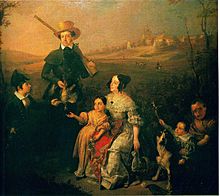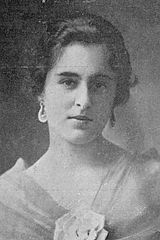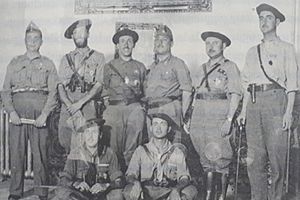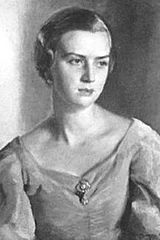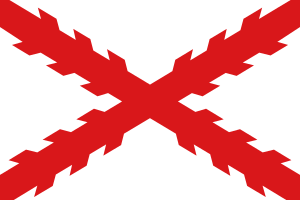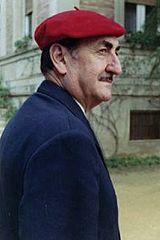Ignacio Romero Osborne facts for kids
Quick facts for kids
Ignacio Romero Osborne
|
|
|---|---|
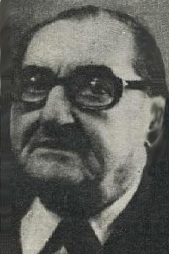 |
|
| Born | 1903 Seville, Spain
|
| Died | 1985 (aged 81–82) Seville, Spain
|
| Nationality | Spanish |
| Occupation | landowner |
| Known for | ex-combatant leader |
| Political party | Carlism |
Ignacio Romero Osborne, 5th Marquess of Marchelina (1903-1985) was a Spanish noble, landowner, and military officer. He was also a politician who supported Carlism, a movement that wanted a different branch of the royal family to rule Spain.
In the 1930s, he was involved in plans against the Second Spanish Republic, which was the government at the time. He helped organize the 1936 military takeover in Seville. During the Spanish Civil War, he led military units for the Nationalist side.
Ignacio Romero Osborne is best known for leading the Requeté ex-combatant group, especially in the late 1960s. He supported Prince Carlos Hugo during disagreements within the Carlist movement. From 1968 to 1971, he was part of the Carlist leadership team, called the Junta Suprema. After that, he led the Carlist Party in Seville. In the 1970s, he also opposed the Franco government and supported the Carlist Party's more left-wing ideas.
Contents
Early Life and Family
Ignacio Romero came from important noble families in Andalusia, a region in southern Spain. His family owned large areas of land. His great-grandfather, Ignacio Romero Cepeda, was a high-ranking official in Spanish territories in America. He was given the title of Marqués de Marchelina in 1858.
Ignacio's grandfather, Alejandro Romero Cepeda, married a woman who later became the Marquesa del Arco Hermoso. Their son, Ignacio Romero Ruíz de Arco (Ignacio's father), inherited both noble titles. He was also a military officer and reached the rank of lieutenant colonel before he passed away. In 1898, he married Enriqueta Osborne Guezala, who came from the famous Osborne family known for making wine. Her brother later created the well-known Osborne bull symbol.
The family lived in Seville and also on their country estates. Ignacio was the fourth child and first son of five children. His father decided to split the noble titles between his two sons. Ignacio received the title of Marqués de Marchelina.
It's not clear where Ignacio went to school when he was very young. Both he and his brother decided to join the military, following their father's path. In 1919, Ignacio joined the Toledo Infantry Academy. In 1921, he moved to the Academia de Artillería de Segovia, a military academy for artillery. He became a lieutenant in 1927 and was first sent to serve in Tenerife.
In 1934, Romero married Micaela de Solís-Beaumont y Lasso de la Vega from Seville. Her family also owned land in Carmona. Ignacio and Micaela lived in Seville and had 14 children between the mid-1930s and early 1950s.
Their oldest son, Ignacio Romero Solís, became a leader of the Communist Party in Seville in the 1960s. He spent a year in prison. Later, in the 1980s and 1990s, he led the Andalusian branch of the Spanish public broadcasting company, RTVE. He also wrote a series of novels about the old Andalusian noble families. The title of Marqués de Marchelina was passed down to his grandson, who is the current marqués.
Military Service and the Civil War
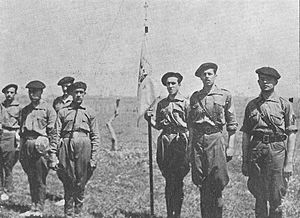
In 1929, Romero was moved from the Canary Islands back to mainland Spain. He was stationed in Cádiz. Around 1930 or 1931, he was transferred to Madrid. There, he worked at an army factory that also developed chemical weapons.
The government of the Second Spanish Republic tried to reduce the number of army officers. It's not clear exactly how, but by late 1933, Romero was no longer in active military service. He was known as a "retired lieutenant."
Romero's family had always been conservative, supporting the monarchy. At some point in the early 1930s, Ignacio became interested in the Carlists. By late 1932, he was an important figure in the Carlist group in Seville. In 1933, the Carlist leader in Andalusia, Manuel Fal Conde, made him vice-president and treasurer of the Seville Carlist organization.
Romero was very involved in preparing for the 1936 military takeover. He helped get and smuggle weapons, possibly spending a lot of his own money.
On July 18, 1936, Romero took part in the Requeté attack on the government building in Seville. This helped the Nationalists quickly take control of the city. Later that month, he led a Requeté group that captured Puente Genil and nearby areas. He continued to lead his group in battles in August and September, defending Campillos against attacks from Republican forces.
After the Carlist troops were reorganized, he led a machine-gun company. In early 1937, his unit was in the Jaén province. He was one of the few professional officers in a unit called Tercio Virgen de los Reyes. In October, he was promoted to major and took command of the Third Battalion of Requetés from the South. In November 1937, his unit moved to the Peñarroya area. In March 1938, during a fierce battle, Romero was severely injured by an exploding shell. He survived but had his leg amputated.
Life After the War
In late March 1938, Romero was appointed to the temporary city council of Seville. It's not clear if he took on these duties right away, as he was still recovering from his injuries until at least September 1938. At some point, he was promoted to sub-colonel and then to "coronel jefe de los Servicios de Intendencia," a role in the army's supply services. After the war, he appeared at public events in this role, sometimes near Franco.
However, in the early 1940s, he disappeared from public life. The reasons are not fully clear. Some sources suggest he protested against the executions of former military colleagues who had supported the Republicans. He also reportedly demanded better conditions for imprisoned former Republican officers. This stance might have made him unpopular with the Franco government and stopped his military career from advancing further. It is not known when Romero left active military service.
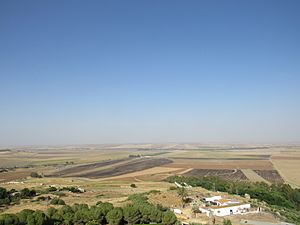
During the 1940s, Romero completely withdrew from public view and from Carlist activities. He focused on his family and managing his rural properties. The Romero family traveled between Seville and their country estates. In 1950, he tried to claim another noble title, the Marquesado de Dos Hermanas, but he was not successful.
Later in the decade, he was known as a landowner from Carmona, managing property his wife had inherited. He grew olives and ran his own oil-mill, which was part of a larger company that produced oil and vinegar. After a long absence from the news, Romero started appearing in local Andalusian newspapers in the early 1950s, but only in the social columns. He was mentioned as a member of the Real Maestranza de Sevilla (a noble organization) or at family gatherings, especially when his older children were getting married.
Return to Carlist Politics
Romero became publicly active again in 1962. He joined the leadership of a new group called Hermandad de Antiguos Combatientes de Tercios de Requetés. This was a Carlist organization for former soldiers, officially connected to the government's Movimiento Nacional. In the same year, he was promoted to full colonel.
Over the next few years, Romero took on important ceremonial roles within the Carlist movement. In 1964, he went with Princess Irene to the Valley of the Fallen, a famous monument. In 1965, he organized and led a large and well-known pilgrimage to Santiago de Compostela. When the previous president of the Hermandad, José Luis Zamanillo, was removed, Romero became the new president in 1965.
As president of the Hermandad, Romero didn't have much power to make big decisions within the Carlist movement. However, he was seen as a respected figure among the top leaders. He received many complaints from regular members who were worried about the Carlist movement becoming too left-wing and abandoning its traditional ideas. But Romero didn't act on these complaints. Instead, he supported Prince Carlos Hugo, who was leading the movement in this new direction.
In 1968, Carlos Hugo's supporters removed José María Valiente from his leadership position. They replaced him with a group called the Junta Suprema, and Romero was named one of its members. He continued to support Carlos Hugo's followers in their struggle against the more traditional Carlists. The traditionalists, with help from the Franco government, tried to take back control of the Hermandad in 1971 and declared Romero removed from his position. He lost control of the organization, and the group that still recognized him began meeting in France.
In 1971, the Junta Suprema was dissolved. Romero was then appointed the leader of the Carlist Party in Seville province. Carlos Hugo praised him as "the most loyal Marquess of Marchelina." In the early 1970s, Romero promoted socialist ideas, calling them a renewed form of Carlism. He represented the Carlist Party in groups that opposed the Franco government.
In 1974, he appeared as a defense witness in the trial of some members of the GAC, but he condemned violence after the 1976 Montejurra shooting. In the same year, he stated that the Carlist Party "remains fully aligned with socialism." He also supported working with other democratic groups. He lost his Cruz de San Hermenegildo award because he called for the release of political prisoners. In 1977, he was expected to run for the senate but later withdrew. He last gained public attention when he embraced a former Republican soldier. This was seen as a symbolic act of national reconciliation.
See also
 In Spanish: Ignacio Romero Osborne para niños
In Spanish: Ignacio Romero Osborne para niños
- Carlism
- Carlist Party (1970)
- Traditionalism (Spain)


